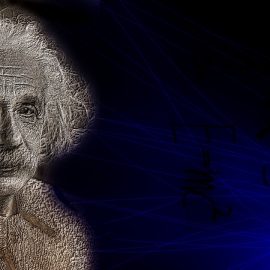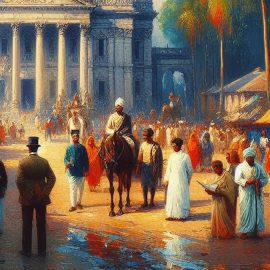

This article is an excerpt from the Shortform book guide to "Orientalism" by Edward Said. Shortform has the world's best summaries and analyses of books you should be reading.
Like this article? Sign up for a free trial here .
What role did the Orientalist stereotypes play in the making of the Orient identity? Were they accurate in their representation?
Orientalist stereotypes were the hallmark of the Orientalist movement. Orientalists believed there to be little if any distinction between cultures within the Orient—it was all one undifferentiated mass, so what was true for Egypt was also true for Iran, Transjordan, Palestine, and Arabia.
Read about Orientalist stereotypes.
How Orientalist Stereotypes Shaped Identity
The hallmark of Orientalist thought was the idea that the Orient was a monolithic mass whose people, culture, and society had remained unchanged since the days of the ancient civilizations.
This belief in an essential, static, and unchanging Orient enabled Orientalists to make sweeping generalizations about the mental framework of the millions of people living in the Middle East—despite the enormous cultural, social, ethnic, and linguistic diversity of the region.
The idea that the Orient was static and unmoved by the forces of modernity directly fed the myth of the supposed “Oriental mind.” In the Orientalist telling, the “Oriental mind” was incapable of the kind of objectivity and rationality that would enable the people of the region to develop enlightened European institutions like science, representative democracy, capitalism, and the rule of law. Instead, the people of the Orient saw everything as subjective and transactional. As a people, they were vengeful, emotional, dishonest, and violently obsessed with shame and honor.
This speaks to another aspect of Orientalist stereotypes: the essentialism regarding the peoples of the region. Orientalists believed that non-Westerners shared a set of essential characteristics that made them who they are. According to this mode of thinking, a person’s identity as an “Oriental” was the most important fact one needed to know about them. Every other aspect of their humanity was secondary to it and could be explained by reference to it.
We see orientalist stereotypes in works from the period like Tancred, an 1847 novel by British parliamentary backbencher (and future Prime Minister) Benjamin Disraeli. The novel details the adventures of the titular protagonist, a member of the British landed gentry, who travels to the Holy Land in the footsteps of the Crusaders, in an attempt to connect more deeply with his Christianity. Tancred’s interactions with the people he encounters there come down to the essential and unalterable racial characteristics. Whether they are Jews, Muslims, or Druzes matters little, they are all fundamentally “Orientals.” An “Oriental” worships, lives, eats, fights, and dies as an “Oriental.” No matter what he does or thinks, he can never shake loose this fundamental component of his identity.
Orientalist Stereotypes and Scientific Racism
The Orientalist stereotypes are closely tied to scientific racism, which was broadly accepted within the Western academic community from the 18th century through the first half of the 20th century. These ideas were only finally discredited when they were carried to their logical (and catastrophic) conclusion by the Nazis during the Holocaust.
Scientific racism argued that humanity was divided up into different races (like the “Asiatic,” the “Aryan,” the “Negroid,” the “Semitic,” and so on), each with their own set of immutable characteristics. Thus, a race scientist could speak of the behaviors of “the Asiatic” or “the Oriental” just as a naturalist might describe the behavior of “the gazelle” or “the antelope” in the wild. The individual was largely irrelevant to this system of classification. What mattered most was the racial group to which she belonged.
The Passive Orient
Because of its perceived failure to keep up with European political, economic, and technological advances, the Orient was seen by the Orientalists as incapable of acting upon its own agency or initiative.
In Orientalist writings, the Orient is forever in the passive position. It can never act of its own accord; it can only be acted upon. Even when scholars did encounter unmistakable evidence that contradicted the Orientalist stereotypes (as with, for example, the Egyptian nationalist movement, which gained momentum in the late 19th century) they could comfortably write it off as an anomaly.
This was because the people of the Middle East lacked the initiative and innate racial characteristics (as the Orientalists saw it) to break free from their ancient superstitions and irrationality. They would forever be at the mercy of events, never in control of their own destiny—and certainly incapable of gaining the requisite knowledge and enlightenment to bridge their gap with the West on their own.

———End of Preview———
Like what you just read? Read the rest of the world's best book summary and analysis of Edward Said's "Orientalism" at Shortform .
Here's what you'll find in our full Orientalism summary :
- How Western society invented the concept of Orientalism
- Why "the Orient" was thought of as a different, exotic, and dangerous place
- How Orientalism was central to European colonialism






